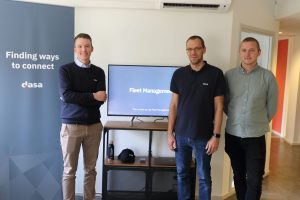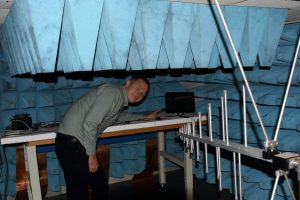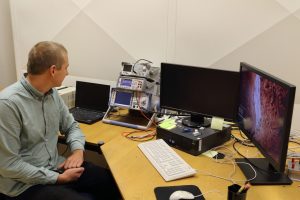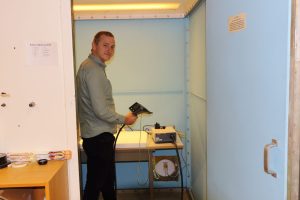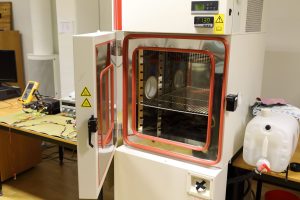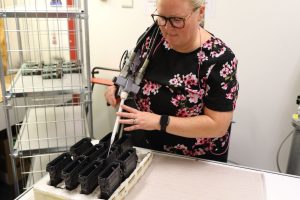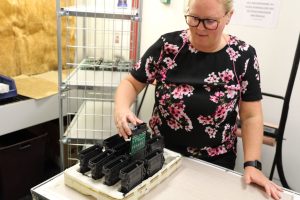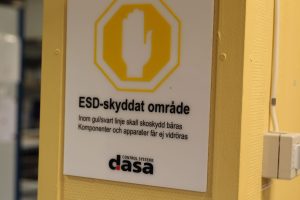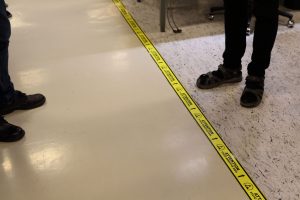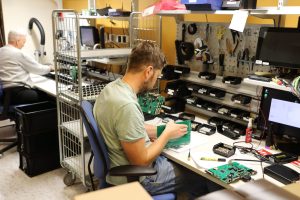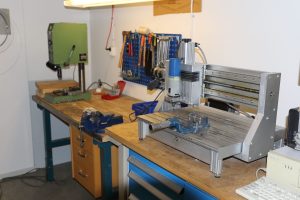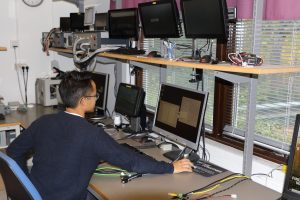It all started in 1987 with the LMS, Length Measuring System. Soon after, the computers entered the harvesters to assist the bucking. The rest is, as they say, history. Today Dasa offers complete system solutions for forestry operations, mobile machines, and fleet management.
Dasa – the logger’s best friend
Dasa, or Dasa Control Systems AB, is a brand that has been present in my life for a long time. It’s one of those brands that just are there, as a natural part of everyday life without you thinking about it.
So, I obviously had to go when I was invited to visit the Dasa factory. The sales & marketing director Anders Lidberg and the two engineers Andreas Ericsson and Jesper Åhman took good care of me and showed me the facilities. More on that later in the article.
Dasa is situated in the south Swedish town of Växjö. A university town where also two of the major players in Swedish forestry have their seats – Södra and Vida. Since 2012, Dasa is owned by Indutrade Group, an international technological and industrial group with its main office in the Stockholm area (the capital of Sweden).
Dasa – What do they do today?
In February this year, we wrote about the DASA Wireless 1 system which is the latest version of a long row of Dasa bucking systems. The first computerized bucking system was the Dasa 180 (Dasa 1) which was launched in 1989. Dasa 2, 3, and 4 followed and in 2005 the Dasa 5 was launched.
The special thing with Dasa 5 was that it was not only a bucking system but also a machine control system. From here on, complete solutions were the thing for Dasa, and in 2021, Dasa 7, the seventh generation of the bucking system was launched.
The Dasa offer is flexible. As many machine manufacturers have their own systems for the machines, Dasa can integrate with those systems. The customer can choose if he or she wants just one part, like bucking assistance, or a complete system with machine control and fleet management as well.
The Dasa systems support StanForD Classic and StanForD 2010. StanForD is a global file type standard recommended by the forestry business and used by most forest machine manufacturers. This is for logging contractors and organizations who want to get a good insight into their forestry operations.
DCS
Digitalization, connectivity, and sustainability, DCS, are keywords in the Dasa offer. With the vast information flow that we experience today, a lot of time is spent on administration.
All data that is collected must be analyzed to be useful. If that could be handled automatically, it would give room for other issues such as sustainability, and of course, streamlining the production. Dasa offers cloud-connected services that simplify the job, minimize administration, and save time.
Here we are talking about clouds, computers, tablets, smartphones, and apps. Information collected by the machines is sent to a selected recipient, such as, e.g., the home office. E.g., if you have no connection in the forest, you download it to your phone and send it when you have a connection. Just simple!
Fleet management
Bucking assistance and machine control systems we already mentioned. Fleet management is yet another service that Dasa offers. Dasa Fleet 3.0 is compatible with all types of mobile machines and ready to be used all over the World. The system allows you to coordinate, support, and update all machines in your fleet from anywhere.
One person can monitor a theoretically unlimited number of machines simultaneously. Fuel consumption, alarms, tire pressure, service, breakdowns, and much more for each machine are kept track of with the system. The system can also be used for showing service and repair staff where the machine is located for the moment and suggesting a route to that location.
Feller-bunchers are next
To me and many others, Dasa is about bucking assistance. A typical CTL (Cut-To-Length) system that nowadays is used on all CTL harvesters. But Dasa has acknowledged another, a bit surprising (to me anyway), segment – feller-bunchers.
Feller-bunchers are used in full-tree handling systems. How could Dasa possibly contribute here? Well …
Forestry companies have gotten used to and learned to see the value in the production data they can receive from CTL computer systems. Now, the same type of standardized systems is requested also for full-tree handling machines such as feller-bunchers.
Dasa has accepted the challenge and soon a new Dasa control system for feller-bunchers will be launched.
Research, development, testing, and production
The Dasa factory is an assembly facility. Components are purchased from sub-suppliers and assembled at the factory. Research, development, and testing are however carried out at the factory.
To cope with the tough environment in the forest, a lot of testing must be done, and for that, the proper equipment is needed. A test room for radio waves is one such necessity. Imagine all the radio waves that float around a modern forest machine with all its wireless technology. Of course, there are regulations and limitations to consider. To make sure the Dasa equipment is within the framework, tests must be done.
Static electricity is another issue that could cause problems for a machine, just like electricity peaks. Also, this must be tested at the factory to avoid problems when new products are already in use by the customers.
Hoping for good weather
The weather is yet another issue to consider. Computers are for most of us, not tools that you bring out in the rain or when it’s freezing. In a forest (or any other mobile) machine you don’t have much choice. You can’t always keep the machine at an indoor temperature and moist level. The equipment in the machine must cope with it, even the computers. So, even the weather must be simulated in the test lab in a special “weather maker”.
One thing that is done to avoid moisture from affecting the electronic components is to fill them with a special gel. The gel is colorless and provides a dry environment for the electronics.
Assembly room
The assembly and final testing of the products take place in a special ESD (Electrostatic discharges) secured room. To enter that room you need special, or your own covered, shoes. You are not allowed to touch anything. Static-sensitive areas are marked with yellow stripes on the floor.
In the room, each product has its assembly station that contains all components and specifications for that product. When a certain product should be assembled, the appointed person goes to the station for that product. That means that the staff doesn’t have to sit in the same spot all the time which gives a better working environment.
Prototypes are made the old-fashioned way
Even though components are purchased from sub-suppliers, some things must be done at the factory. During the development of new products, prototypes must be manufactured as those are secret during development and testing. Therefore, an old-fashioned factory workshop is available at Dasa. Small, but useful. Everything needed can be manufactured there. It seemed to me that this room was the engineer’s favorite room at the factory. A real man cave filled with toys.
Service and Repair
As a service for customers and dealers, the premises also contains a service workshop. Here all Dasa products can be maintained and, if necessary, repaired by professionals at the factory.
Find out more
For people like me, the Dasa products are like “secret boxes” that just work. You don’t think much about how it works or how they are made. Therefore, it was very interesting to see what’s going on at Dasa and to learn more about what they are doing.
Still, this article only scratches the surface of Dasa’s business. If you want to find out more, I recommend a visit to the Dasa home page where you can dig deeper.
Photos: Per Jonsson







